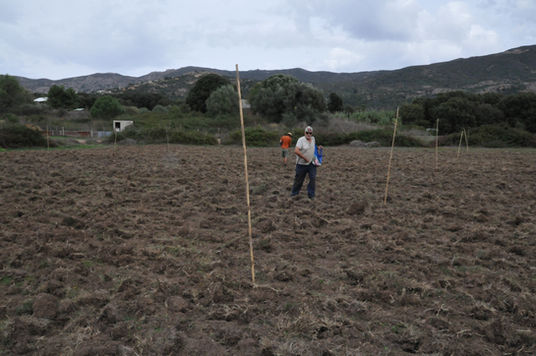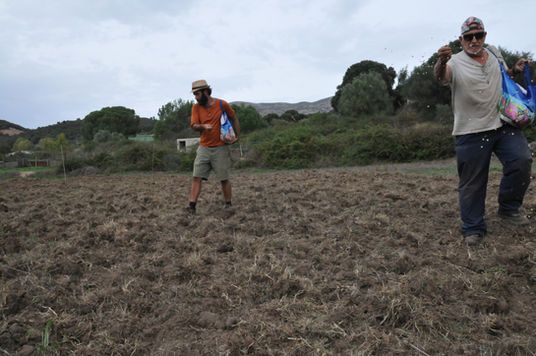
PRODUCTION DE SEMENCES DE LUPIN POUR RÉGÉNÉRER LES SOLS
Trésor pour la régénération des sols et l'alimentation du bétail
Le Lupin : Un peu d’histoire...
Le lupin tomba dans l’oubli en Europe jusqu’à la crise de 1929.
Pour s’affranchir de leur dépendance vis à vis des tourteaux importés, les allemands firent des recherches sur des plantes riches en protéines, le lupin fut sélectionné pour son meilleur rendement à condition toutefois d’obtenir des variétés pauvres en alcaloïdes.
Le professeur Sengbush de l’institut Kaiser Wilhem de Muncheberg réussit à obtenir 7 lupins peu amers dont la culture se développa rapidement. Sept ans plus tard, en 1938, 78 000 ha furent ensemencés.
Puis vint la guerre, et le lupin, comme les autres légumineuses, déclina en Europe occidentale mais pas en Europe de l’Est qui poursuivit cette culture en Hongrie, en Pologne et en URSS.


Un atout pour l’indépendance alimentaire
Le lupin, médaille d’or olympique pour capter l’azote de l’air et le synthétiser dans le sol, représente un espoir sérieux pour les pays pauvres, permettant de valoriser des sols acides où pratiquement rien ne pousse.
-
Il enrichit naturellement les sols pauvres, il améliore leur structure et il est un très bon précédent cultural. Une culture de lupin peut apporter dans un sol dégradé, squelettique, acide, jusqu’à 300 kg d’azote naturel, plus 100 kg de phosphate naturel extrait du sol et rendu assimilable, et 80 kg de potasse par ha et par an.
-
Semé après une récolte de céréales comme fourrage vert, il peut être consommé directement par les animaux dans le champ, il limite ainsi les besoins d’ensilages estivaux et/ou de récoltes de fourrages verts.
Espace test....
Avec notre partenaire Philippe Desbrosses, nous avons fait des tests de production sur plusieurs variétés.
Objectif de cette démarche :
-
Choisir les variétés les plus adaptées au climat de la région.
-
Tester le potentiel de régénération du sol.
-
Lancer la production sur plusieurs années et produire du lupin pour l'autonomie de l'exploitation.
-
Intégrer les engrais verts dans les vergers.
Les étapes d'implantation
PRÉPARER UN COLLECTIF OU DES ENGINS AGRICOLES
Préparer le chantier
-
Rassembler des humains.
-
Préparer les semences.
-
Préparer l'espace à semer.
PRÉPARER UN ESPACE TEST POUR 8 VARIÉTÉS DE LUPIN
Mise en place
-
Préparer le sol.
-
Semer.
-
Arroser et entretenir (à protéger des lapins!).
MISE EN CULTURE DES SEMENCES CHOISIES
Préparer l'atelier Extraction et conditionnement des graines
-
Préparer la zone d'extraction (plate et propre).
-
Des sacs.
-
De la patience...
RECOLTE DES SEMENCES
Récolte des semences
-
Préparer le chantier participatif.
-
Le matériel (sacs, brouettes, mini-faux).
RECOLTE DES SEMENCES DE LUPIN
Mise en place de l'Atelier
-
Récolte des semences.
-
Fauche de la biomasse et couverture du sol.
-
Conditionnement des semences.
REGENERER UN VERGER AVEC DES ENGRAIS VERTS
Mise en place des engrais verts
-
Semer des engrais verts à la volée.
-
Création de biomasse.
-
Couverture du sol et régénération des sols.
Vous souhaitez réaliser ce type de projet ?
Des formations sont disponibles :
-
Formation lecture du paysage
-
Formation système anti érosion
-
Formation production alimentaire



.png)





























































